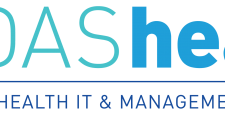As we implement new technologies and gather more data on social determinants of health, it’s critical that we right a pervasive wrong when it comes to meeting social needs: closing the referral loop.
Imagine, for example, Mrs. Smith comes into the emergency room and is identified as food insecure. A social worker refers her to a local food shelter, but no one follows up and she never receives care. I’ve seen this disconnect in the referral process countless times in my 30 years in the healthcare industry. It perpetuates a heavy burden on individuals who, in addition to food insecurity, may already be facing difficulties like homelessness or mental illness.
As COVID-19 exacerbates social needs—particularly among underserved communities and people of color—there is renewed urgency to bridge these gaps. We must embrace emerging technologies to streamline our referral systems, but the human touch of providers will remain essential to improving health at scale.
Care and continuity
The most successful referral networks break down the silos of care coordination by digitally connecting medical, behavioral and social care providers. This creates transparency, enables more real-time, informed referrals, and takes the burden off individuals.
For example, we often find that community members have multiple social needs, and many have a history working with community-based organizations they trust. Think back to Mrs. Smith; imagine if her ER doctor was using a digital system that could see her referral history and notify the same organization she’s worked with before: “Mrs. Smith, I see Catholic Charities provided you food services in the past. Did you know they also provide mental health support?” By improving referral continuity, we increase the likelihood that individuals will actually receive care.
It’s important that providers, clinicians and health systems see the value in the real-time knowledge and coordination made possible by these digital platforms. Gone are the days of searching for service information in outdated print directories or calling multiple community organizations to check in on their capacity to assist an individual. Until recently, it was nearly impossible to determine not only whether a referral was made, but also whether or not the community member actually received services.
Embracing these tools can improve time management and work flows as much as it can improve health. With adequate training, these tools give providers more time to talk to their patients, assess the underlying basic needs impacting their health, and craft personalized care plans based on where each individual is at in the referral process.
Data needed to define success
When I first started at Alliance for Better Health, I noticed a disconnect in our data: our service episodes were growing, but it was unclear whether the community member was connected, or whether the partner forgot to close the encounter. We had to go back through the unresolved episodes to make sure we addressed the issues that were preventing referrals from resulting in services.
Long-term, the growth and success of a referral network comes down to the accurate gathering and analysis of data. Sending 100 referrals each month is great activity, but if 65% of those referrals didn’t ultimately connect people to the services they need, that’s not success. This is where human thinking must step in: What is the reason for the disconnect? Was it a lack of contact information? Or an oversight in data entry? Providers, clinicians, and community organizations can help spot these disconnects, troubleshoot issues, and shape future iterations of the platform to better serve their needs.
Of course technology is not a silver bullet. While it is incredibly valuable to aggregate the data, the human intervention to monitor it, connect with partners about it, and make improvements based on those insights is truly the root of a network’s success. Digital platforms alone can’t move the needle on health. Each network is only as good as the providers that use it. Let’s make a proactive effort to keep social needs top of mind and embed the social care referral loop into our day-to-day workflows and interaction across the healthcare system.

















